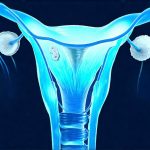Urinary tract health is often taken for granted until something goes wrong. For women, maintaining optimal urinary function presents unique challenges due to anatomical differences and hormonal fluctuations throughout life. A key component of this health lies in understanding and supporting the delicate pH balance within the urinary system. The pH level – a measure of acidity or alkalinity – plays a critical role in preventing infections, reducing inflammation, and ensuring overall comfort. Ignoring this aspect can lead to frustrating and often recurring issues like cystitis, urgency, frequency, and discomfort.
Many factors can disrupt the natural pH balance of the urinary tract in women, ranging from dietary choices and hydration levels to hygiene practices and even stress. A healthy vaginal flora also significantly impacts urinary health, as these two systems are closely connected. This article will explore the intricacies of balancing pH for optimal urinary health in women, offering practical insights and actionable strategies to support a comfortable and thriving system. It is important to remember that this information is for educational purposes only and should not be considered medical advice; always consult with a healthcare professional for personalized guidance.
Understanding Urinary pH & Its Importance
The ideal pH range for urine typically falls between 6.0 and 7.0, leaning slightly acidic. This acidity helps create an environment less hospitable to many common urinary pathogens like E. coli, the bacteria responsible for most UTIs. However, it’s not simply about achieving a specific number; maintaining a stable pH within this range is crucial. Fluctuations can disrupt the natural defenses and increase susceptibility to infection. Several things influence urine pH including diet, hydration status, kidney function, and even medications.
A higher (more alkaline) pH can encourage bacterial growth, while an extremely low (acidic) pH might irritate the bladder lining. It’s a delicate balance! The vagina naturally maintains a lower pH – between 3.8 and 4.5 – due to lactic acid produced by beneficial bacteria (Lactobacilli). This vaginal acidity is vital for preventing overgrowth of harmful organisms, which can then ascend into the urinary tract. Maintaining the health of the vaginal microbiome directly supports urinary health as they are closely linked anatomically and physiologically.
The body has inherent mechanisms for regulating pH, but these systems can be overwhelmed or compromised by various factors. Lifestyle choices play a huge role; what we eat and drink significantly impacts urine acidity. For instance, diets high in processed foods, sugar, and certain animal proteins tend to increase acidity, while fruits and vegetables have an alkalizing effect. Hydration is also paramount: adequate water intake dilutes urine, reducing the concentration of irritants and helping maintain a balanced pH. Understanding how to advocate for regular health checks can be beneficial too.
Dietary Strategies for pH Balance
Dietary adjustments are often the first line of defense in supporting urinary health and influencing pH levels. It’s not about radical restrictions but rather incorporating more supportive foods and moderating those that can be problematic. Consider these strategies:
- Increase Alkalizing Foods: Incorporate more fruits (especially berries, melons, and citrus – though moderation is key for bladder sensitivity), vegetables (leafy greens, cucumbers, celery), and whole grains into your diet. These foods contain compounds that help neutralize acidity within the body.
- Moderate Acid-Forming Foods: Reduce intake of processed foods, sugary drinks, excessive red meat, and alcohol. While not necessarily eliminating these entirely, mindful moderation can prevent significant pH imbalances.
- Hydration is Key: Aim for at least eight glasses of water per day. Water dilutes urine, reducing acidity and flushing out potential irritants. Herbal teas (unsweetened) also contribute to hydration but be mindful of any bladder sensitivities.
Beyond these general guidelines, consider focusing on foods rich in vitamin C, which can slightly acidify the urine and inhibit bacterial growth. Cranberries have long been associated with urinary health; while they don’t significantly alter pH, their compounds may prevent bacteria from adhering to the urinary tract walls. However, cranberry juice often contains added sugar, so opt for unsweetened versions or consider cranberry supplements. A healthy diet also complements optimal urinary flow.
The Role of Probiotics & Gut Health
The gut microbiome – the trillions of microorganisms residing in our digestive system – has a profound impact on overall health, including urinary function. A healthy gut flora supports immune function, reduces inflammation, and even influences vaginal pH, indirectly impacting the urinary tract. Lactobacilli, beneficial bacteria commonly found in yogurt and probiotic supplements, are particularly important for maintaining vaginal acidity and preventing harmful bacterial overgrowth.
Probiotics aren’t a one-size-fits-all solution. Different strains have different effects; research suggests that certain Lactobacillus strains (such as L. rhamnosus GR-1 and L. reuteri RC-14) are particularly effective for vaginal health and may reduce the risk of UTIs. Consider incorporating probiotic-rich foods into your diet, such as yogurt with live cultures, kefir, sauerkraut, and kimchi.
Supplementing with a high-quality probiotic can also be beneficial, but it’s crucial to choose one specifically formulated for women’s health and containing clinically studied strains. It’s also important to remember that probiotics work best when combined with a healthy diet rich in prebiotic fibers – foods like onions, garlic, bananas, and asparagus – which feed the beneficial bacteria in your gut. Best times of day to hydrate are also important for optimal health.
Hydration & Urination Habits
Proper hydration isn’t just about drinking enough water; it’s also about how you hydrate and your urination habits. As mentioned earlier, adequate water intake dilutes urine, reducing acidity and flushing out potential irritants. However, avoiding dehydration is only half the battle. Consistent, complete bladder emptying is equally important for preventing bacterial buildup.
Here are some key points to consider:
- Don’t hold it in: Regularly emptying your bladder prevents stagnation, which allows bacteria to multiply. Aim to urinate every 2-3 hours, even if you don’t feel a strong urge.
- Complete Emptying: Take your time and ensure your bladder is fully emptied each time you urinate. Avoid rushing or interrupting the flow.
- Post-Coital Urination: This practice – urinating shortly after sexual activity – can help flush out any bacteria that may have entered the urethra during intercourse, significantly reducing UTI risk.
- Avoid Excessive Diuretics: While staying hydrated is crucial, excessive consumption of diuretics like caffeine and alcohol can actually dehydrate you and potentially irritate the bladder. Moderate your intake accordingly.
Choosing water as your primary beverage is ideal; however, herbal teas (unsweetened) are also a good option. Avoid sugary drinks, which can contribute to inflammation and bacterial growth. Listen to your body’s signals and adjust your fluid intake based on activity level and climate. How to choose underwear also impacts urinary health. Monitoring the urinary health of aging relatives is important too.
Maintaining optimal urinary pH is not about striving for perfection but rather creating an environment that supports overall health and resilience. By embracing these dietary strategies, prioritizing gut health with probiotics, and adopting mindful hydration habits, women can significantly improve their urinary function and minimize the risk of discomfort and infection. Balancing energy and stillness is also key to overall wellbeing. Remember to always consult with a healthcare professional for personalized guidance and address any specific concerns you may have. Also, remember salt intake impacts kidney function too!





















